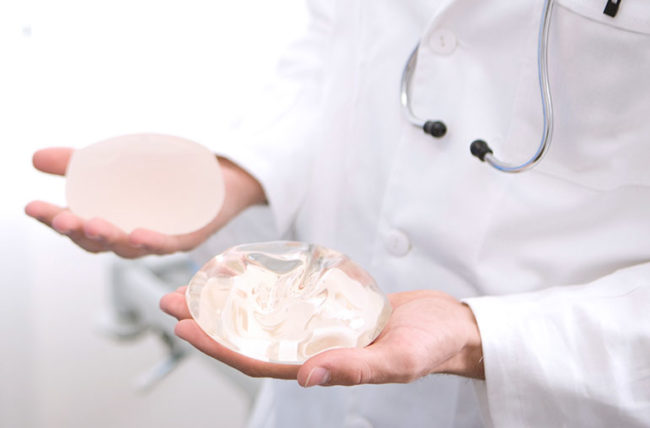Safety First: Exploring Botox Danger Zones and Their Risks
Posted on: May 4, 2024
Understanding Botox and Its Uses
Medical Uses
Botox, known for its cosmetic benefits in the face and eyebrows, also plays a crucial role in medical treatments, including those affecting facial expressions and preventing eyelid droop. It effectively treats muscle spasms, offering relief to patients with conditions like cervical dystonia, as part of a comprehensive treatment plan that also places emphasis on jaw issues and cosmetic procedures. By targeting muscles, it eases discomfort and improves mobility.
Doctors use it to manage excessive sweating and migraines too. These applications highlight Botox’s versatility beyond aesthetic improvements.
Cosmetic Applications
In the realm of beauty, Botox shines by reducing wrinkles and fine lines, especially with strategic placement in the eyebrows zone and other facial regions. It works by temporarily paralyzing facial muscles, leading to smoother skin, but awareness of botox danger zones is crucial for self-application of this type of treatment in the short term. This action, a safety measure for oneself, prevents the deepening of wrinkles caused by repetitive muscle movement, avoiding botox danger zones.
Patients seek it in the self-care zone for a youthful appearance without undergoing surgery. Its ability to subtly enhance features makes it a popular choice among those looking to minimize signs of aging.
Mechanism of Action
Botox operates by blocking nerve signals that cause muscle contraction. This temporary paralysis is why it’s effective in both treating muscle-related conditions and in cosmetic applications. The precision in targeting specific muscles is key to its success.
Understanding this mechanism clarifies how botulinum toxin works selectively, without affecting the entire body.
Common Misconceptions
Many fear Botox due to misconceptions about its safety. However, when administered by trained professionals, it is both safe and effective. The key lies in understanding its proper use and the importance of dosage.
Educating oneself about these aspects can dispel fears and highlight Botox’s benefits when used correctly.
Common Botox Injection Sites
Forehead Lines
Forehead lines are a primary target for Botox. These horizontal lines form from raising eyebrows, contributing to an aged appearance. By injecting Botox into the forehead muscles, their movement reduces, softening these lines. This process requires precision to maintain natural facial expressions.
Patients see results within days. The effects last up to four months.
Crow’s Feet
The area around the eyes, especially the outer corners, develops crow’s feet due to smiling and squinting. Botox injections here relax the muscles, significantly reducing these fine lines. The treatment enhances the eyes’ appearance, making them look more youthful.
Treatment effectiveness varies but generally lasts three to four months.
Glabellar Lines
Glabellar lines appear between the eyebrows from frowning or concentrating. Known as frown lines, they can make one look angry or worried even when relaxed. Botox in this region smooths out these lines by relaxing the corrugator and procerus muscles.
Results become noticeable after a few days, with full effects in two weeks.
Therapeutic Uses
Botox also offers therapeutic benefits beyond cosmetic improvements. It effectively treats chronic migraines by injecting into specific head and neck areas. Similarly, for excessive sweating (hyperhidrosis), underarm injections block sweat production.
These treatments can provide relief for several months before reapplication is needed.
Recognizing Botox Danger Zones
Eye Risks
Injecting Botox near the eyes carries specific risks. One might experience drooping eyelids or even temporary vision loss. These complications arise from Botox affecting muscles it wasn’t intended to. Professionals must avoid these botox danger zones to prevent such outcomes.

Patients should be aware of the potential for ocular ischemia, a rare but serious condition that can occur if Botox is administered in the wrong spot around the eyes.
Lip Challenges
The lips and mouth area are delicate. Incorrect injections here can lead to a loss of emotional expression or create an asymmetrical look. This botox danger zone requires precise technique to avoid impairing one’s ability to smile or show emotion properly.
Muscle Caution
Certain facial muscles, when injected with Botox, may result in side effects like difficulty chewing or a crooked smile. These potential danger zones demand expert knowledge of facial anatomy. Avoiding these areas ensures the preservation of natural facial functions and expressions.
Managing Risks and Expectations
Expert Consultation
Consulting with experienced aesthetic professionals is crucial. They help identify the safest approach for Botox injections, especially in danger zones. Their expertise minimizes risks.
Professionals tailor a treatment plan that suits your medical conditions and desired outcomes. They ensure safety measures are in place, reducing potential risks.
Realistic Outcomes
Setting realistic expectations is key to satisfaction with Botox treatments. Understand that results are temporary and may require follow-up appointments.
Discuss possible results openly with your provider. This ensures your expectations align with what can be achieved, enhancing confidence and esteem in your appearance.
Side Effects Management
A thorough discussion on potential side effects is essential. It helps prepare for any reactions post-treatment.
Healthcare providers can offer advice on managing mild side effects at home or when to seek medical attention for more severe reactions. This knowledge is vital for a safe recovery process.
Long-Term Effects of Botox
Reduced Wrinkles
Botox helps diminish wrinkles. Regular use can make fine lines less noticeable. It also prevents new wrinkles from forming. This is because Botox relaxes facial muscles, leading to smoother skin.
Patients often see their skin’s appearance improve over time. They notice fewer wrinkles and fine lines, especially around the eyes. This benefit becomes more pronounced with consistent treatments.
Resistance Risks
However, long-term Botox use has its downsides. Some people develop a resistance to treatments. This means they may need higher doses to achieve the same results.
Resistance can be frustrating and expensive for patients. It underscores the importance of spacing out treatments properly. Consulting with a professional can help manage this risk effectively.
Balanced Approach
A balanced approach to Botox is crucial for long-term satisfaction. Overuse can lead to an unnatural appearance or muscle spasms.
Patients should aim for a natural look rather than perfection. They should also consider breaks between treatments to minimize risks.
Final Remarks
Navigating the world of Botox requires understanding its uses, recognizing the danger zones, and managing expectations. Your safety hinges on knowing where and how Botox should be applied. This knowledge not only mitigates risks but also enhances the benefits you seek. Trust in reputable professionals who prioritize your well-being and are transparent about the potential long-term effects.
Your journey with Botox doesn’t end here. Stay informed, ask questions, and always prioritize safety over trends. If you’re considering this treatment, let’s chat more about your options and how you can achieve your aesthetic goals safely. Your confidence and health are paramount; make choices that reflect that. Reach out today to take the next step in your beauty journey with peace of mind.
Frequently Asked Questions
What are Botox danger zones?
Botox danger zones are areas where injections can lead to complications or adverse effects. These include regions around the eyes, neck, and mouth, where incorrect application may cause issues such as drooping eyelids or asymmetry.
How can I recognize a qualified Botox injector?
A qualified Botox injector is usually a licensed healthcare professional with specialized training in cosmetic procedures. Look for certifications or memberships in reputable aesthetic medicine organizations to ensure they have the necessary expertise.
What are common Botox injection sites?
Common Botox injection sites include the forehead for reducing wrinkles, crow’s feet around the eyes, and the area between the eyebrows. These target facial muscles responsible for expression lines.
How can I manage risks associated with Botox?
To manage risks, choose an experienced injector, discuss your medical history and expectations thoroughly before treatment, and follow all aftercare instructions provided by your healthcare provider.
Are there long-term effects of using Botox?
Long-term effects of Botox can vary but generally include sustained muscle relaxation and wrinkle reduction with regular treatments. Over time, some users may find they need less frequent injections to maintain results.
Can Botox be used for conditions other than wrinkles?
Yes, beyond cosmetic applications for wrinkles, Botox is also used medically to treat conditions like chronic migraines, excessive sweating (hyperhidrosis), and certain muscle disorders due to its ability to relax muscles.
Is it safe to get Botox injections in danger zones?
While it’s technically possible to receive injections in danger zones, it requires a highly skilled injector familiar with facial anatomy to minimize risks. Always consult with a healthcare professional about the safety of receiving Botox in these sensitive areas.





